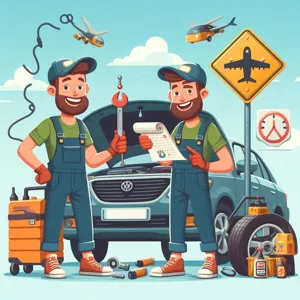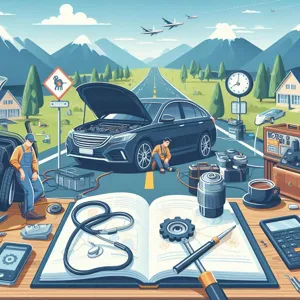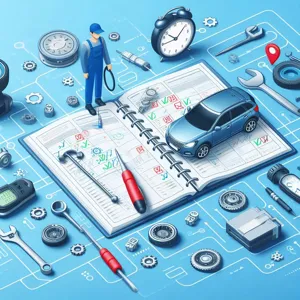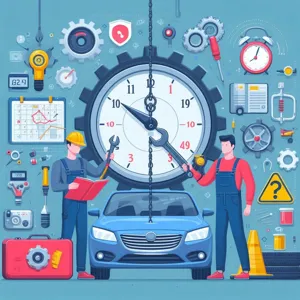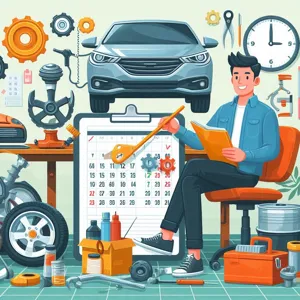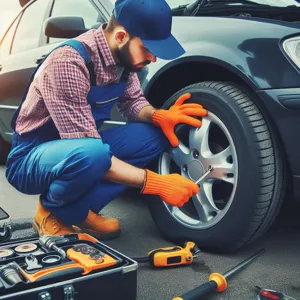Selecting the perfect tires for your motorbike is as crucial as choosing the right bike itself.
Tires are the unsung heroes of your riding experience, influencing everything from grip and handling to comfort and safety on the road. With a myriad of options available, each boasting its own set of specifications, the task of decoding motorbike tire specifications can feel overwhelming. whether you’re a seasoned rider looking to upgrade your tires for performance or a novice seeking guidance for your first purchase, understanding the intricacies of tire types, sizes, tread patterns, and materials is essential. In this comprehensive guide, we’ll break down the key elements of tire specifications, demystify the terminology, and provide you with the knowledge you need to make an informed decision. Join us as we navigate the world of motorbike tires, ensuring that every ride you take is smooth, safe, and exhilarating!
1. Understanding Tire Basics: Types and Functions

When it comes to choosing the right tires for your motorbike, a solid grasp of the fundamental types and functions is essential. Tires are not just rubber circles; they are the vital connection between your bike and the road, greatly influencing your safety, performance, and overall riding experience.
**Types of Motorbike Tires**
Motorbike tires can be broadly categorized into four main types:
1. **Street Tires**: Designed for on-road use, these tires provide excellent grip on paved surfaces. They are typically made of softer rubber compounds for better traction in dry and wet conditions, making them ideal for sport and touring bikes.
2. **Off-Road Tires**: If you love adventure riding or tackling rugged terrains, off-road tires are your best bet. Featuring deeper treads and tougher compounds, these tires are engineered to handle loose gravel, mud, and rocky trails while providing superior traction and puncture resistance.
3. **Dual-Sport Tires**: These hybrid tires offer versatility for riders who split their time between on-road and off-road riding. With a unique tread pattern, dual-sport tires provide a balance of grip on both surfaces, making them a popular choice for adventure and touring bikes.
4. **Racing Tires**: For those who live life in the fast lane, racing tires are essential. Designed for maximum speed and cornering capability, these tires usually have a slick, minimal tread pattern to reduce rolling resistance. They are made from specialized compounds that offer exceptional grip at high temperatures, ideal for track days and competitive racing.
**Functions of Motorbike Tires**
Understanding the functions of these tires is equally important. The primary roles of motorbike tires include:
– **Traction**: The tread pattern and rubber composition directly impact how well your tires grip the road. Tires with deeper grooves and specific patterns are crucial for ensuring stability in various weather conditions.
– **Stability**: Properly inflated tires contribute to the overall balance of your bike, ensuring a smooth ride even at high speeds. Tires that are too worn or improperly inflated can compromise handling and lead to dangerous situations.
– **Comfort**: The right tires can absorb shocks from uneven surfaces, providing a more comfortable ride. The design and materials used in tires play a significant role in reducing vibrations and impacts felt by the rider.
– **Durability**: Tires are subjected to constant wear and tear, so selecting those made from high-quality materials is essential for longevity. A durable tire will withstand the rigors of everyday riding while maintaining performance over time.
As you embark on your journey to find the perfect tires for your motorbike, keep these basics in mind. Understanding the different types and functions of tires will empower you to make informed decisions, ensuring safety, performance, and enjoyment on every ride.
2. The Importance of Tire Specifications in Motorbike Performance
When it comes to motorbike performance, tire specifications play a pivotal role in determining how your ride handles on the road, interacts with various terrains, and ultimately affects your safety. Tires are not just rubber circles; they are the critical interface between your motorbike and the ground, influencing everything from traction and stability to fuel efficiency and ride comfort. Understanding tire specifications, including width, aspect ratio, construction type, and tread pattern, is essential for any rider who wants to optimize their motorbike’s performance.
The width of a tire affects how much surface area is in contact with the ground, which directly correlates to grip and stability. Wider tires can provide better traction, especially in dry conditions, while narrower tires may excel in wet or slippery environments. However, wider tires can also increase rolling resistance, impacting fuel efficiency and acceleration. Thus, the choice of width must align with your riding style and the conditions under which you typically ride.
The aspect ratio, which is the height of the tire’s sidewall relative to its width, influences the handling characteristics of the bike. A lower aspect ratio typically means better cornering stability, as it reduces flex during aggressive turns. However, tires with a higher aspect ratio can provide a more comfortable ride by absorbing bumps and imperfections on the road.
Tire construction type—whether bias-ply or radial—also plays a significant role in performance. Radial tires tend to offer better grip and handling, particularly at higher speeds, due to their flexible sidewalls. Bias-ply tires, although less common on modern bikes, can provide a sturdy feel and are often preferred for certain types of off-road riding.
Lastly, the tread pattern is crucial for traction and water displacement. A more aggressive, knobby tread is designed for off-road adventures, providing grip on loose surfaces like dirt and mud, while a slick or sport-oriented tread is engineered for maximum performance on paved roads, allowing for quicker acceleration and sharper turns.
In essence, understanding tire specifications is not just about choosing the right size; it’s about enhancing your motorbike’s performance, ensuring safety, and elevating your overall riding experience. Whether you’re a casual cruiser or a hardcore racer, taking the time to decode tire specifications can make a world of difference in how your bike performs on every journey.
3. Deciphering Tire Markings: What the Numbers Mean

Understanding tire markings is essential for any motorbike enthusiast looking to optimize their ride. At first glance, the series of numbers and letters on the sidewall of a tire may seem like an indecipherable code, but once you break it down, you’ll find that it provides crucial information about the tire’s dimensions, capabilities, and intended use.
For instance, let’s take the common tire marking 120/70 ZR17. Here’s what each component signifies:
– **120**: This number represents the tire’s width in millimeters. In this case, the tire is 120 mm wide. A wider tire can offer better grip and stability, which is vital for performance riding.
– **70**: This is the aspect ratio, expressed as a percentage. It indicates the height of the tire’s sidewall relative to its width. A 70 aspect ratio means the sidewall height is 70% of the tire’s width. A lower aspect ratio results in a shorter sidewall, which typically enhances handling at high speeds.
– **ZR**: This designation indicates the tire’s speed rating and construction type. The “Z” signifies that the tire can handle speeds over 149 mph, making it suitable for high-performance motorcycles. The “R” indicates that the tire is of radial construction, which is the most common type found in modern motorbike tires due to its superior performance and flexibility.
– **17**: This final number denotes the diameter of the wheel rim in inches that the tire is designed to fit. In this example, the tire fits a 17-inch rim, which is a standard size for many sport and touring motorcycles.
By familiarizing yourself with these markings, you can make informed decisions when purchasing new tires, ensuring they not only fit your motorcycle perfectly but also align with your riding style and performance needs. Remember, the right tires can significantly enhance your bike’s handling, stability, and overall safety on the road. So, the next time you’re in the market for new tires, take a moment to decode those markings and choose wisely!
4. Different Types of Motorcycle Tires: Street, Off-Road, and Dual-Sport
When it comes to selecting the right motorcycle tires for your ride, understanding the different types available is crucial. Each tire type is designed with specific features to optimize performance in various riding conditions. Let’s delve into the three primary categories of motorcycle tires: street, off-road, and dual-sport.
**Street Tires**
Street tires are engineered for paved roads and urban environments. They feature a smooth tread pattern that enhances grip on asphalt, ensuring stability and responsiveness during acceleration, braking, and cornering. The rubber compounds used in street tires are often softer, providing better traction and a more comfortable ride. If you primarily navigate city streets or enjoy weekend rides on highways, street tires are your best bet. They come in various tread designs that can cater to different weather conditions, from dry to wet surfaces, ensuring that you maintain control no matter the environment.
**Off-Road Tires**
For those who crave adventure beyond the pavement, off-road tires are designed to tackle rugged terrains such as dirt, mud, and gravel. These tires boast a more aggressive tread pattern with larger, deeper grooves to provide superior traction on loose surfaces. Their construction typically involves a tougher rubber compound to resist punctures and wear, making them ideal for trail riding, motocross, or any off-the-beaten-path escapade. If you find joy in exploring nature and navigating challenging landscapes, investing in a good pair of off-road tires is essential for your safety and performance.
**Dual-Sport Tires**
If you find yourself straddling both worlds—enjoying the thrill of the open road while also seeking the excitement of off-road trails—dual-sport tires are the perfect solution. These versatile tires are a hybrid of street and off-road designs, featuring a tread pattern that offers a balance of grip on both paved and unpaved surfaces. They typically have a more durable construction to handle the demands of varied terrains while still providing adequate performance on the highway. Dual-sport tires are excellent for adventure riders who want the freedom to explore diverse landscapes without the need for a tire change.
In summary, choosing the right type of motorcycle tire can significantly enhance your riding experience. Whether you’re cruising city streets, conquering muddy trails, or enjoying the best of both worlds, understanding the specifications and intended use of each tire type will lead you to make an informed decision that keeps you safe and ensures optimal performance on your journeys.
5. Tire Width, Aspect Ratio, and Diameter: A Closer Look

When it comes to selecting the perfect tires for your motorbike, understanding the specifications of tire width, aspect ratio, and diameter is crucial. These three numerical values, usually found on the sidewall of the tire, play a significant role in determining your bike’s performance, handling, and comfort.
**Tire Width**: Measured in millimeters, tire width refers to the distance from one side of the tire to the other when mounted and inflated. Wider tires can enhance traction and grip, especially in off-road conditions, as they provide a larger contact patch with the ground. However, they can also increase rolling resistance and affect fuel efficiency. Conversely, narrower tires may improve aerodynamics and responsiveness, making them ideal for sport-oriented bikes.
**Aspect Ratio**: This figure is expressed as a percentage and represents the height of the tire’s sidewall relative to its width. For example, if a tire has a width of 120 mm and an aspect ratio of 70%, the sidewall height is 84 mm. A lower aspect ratio typically means a stiffer sidewall, which can enhance handling and cornering stability at high speeds. On the flip side, a higher aspect ratio may provide a more comfortable ride, as it allows for better shock absorption on uneven surfaces.
**Diameter**: This measurement denotes the size of the tire in inches, specifically the diameter of the wheel it’s designed to fit. The diameter affects the overall ride height and the bike’s gearing. Larger diameter tires can improve stability and enhance the bike’s performance over rough terrain, while smaller diameter tires may offer quicker acceleration and more agile handling.
When selecting tires, it’s essential to consider how these specifications interact with your riding style and the type of motorbike you own. Whether you’re seeking the thrill of sport riding, the comfort of touring, or the ruggedness of off-roading, understanding tire width, aspect ratio, and diameter will help you make an informed choice that enhances your riding experience. Remember, the right tires can significantly impact how your bike performs and how enjoyable your ride will be, so take the time to decode these specifications before making your purchase.
6. Understanding Tire Tread Patterns and Their Impact on Performance
When it comes to selecting the right tires for your motorbike, understanding tire tread patterns is crucial, as they play a significant role in determining your bike’s performance in various conditions. The tread pattern affects everything from traction and handling to stability and water dispersion, making it essential to choose wisely based on your riding style and environment.
There are several common tread patterns, each designed for specific conditions. For instance, tires with a more aggressive, knobby tread pattern are ideal for off-road adventures. These tires feature deep grooves and raised lugs that dig into loose surfaces like mud, gravel, and dirt, providing superior grip and control. They allow riders to navigate challenging terrains with confidence, but they may sacrifice performance on paved roads due to increased rolling resistance and noise.
On the other hand, if you primarily ride on city streets or highways, a tire with a smoother, more connected tread pattern is often the best choice. These tires typically have fewer grooves and a larger contact patch, enhancing stability and grip on asphalt. They excel in wet conditions, as their design allows for effective water channeling, reducing the risk of hydroplaning.
Then there are sport-touring tires, which strike a balance between the two, offering versatility for riders who alternate between spirited rides on twisty roads and long-distance travel. These tires usually feature a dual compound, with a softer rubber on the edges for enhanced cornering grip and a harder center for improved durability and mileage.
Understanding how tread patterns influence performance is key to enhancing your riding experience. Whether you’re carving through mountain passes, commuting in heavy traffic, or exploring off-road trails, selecting the right tire tread can elevate your bike’s handling, comfort, and safety. Always consider your typical riding conditions and style when choosing tires, as the right tread pattern can make all the difference in your ride.
7. The Role of Tire Composition: Rubber Types and Durability

When it comes to motorbike tires, the composition of the rubber is a critical factor that influences both performance and longevity. Understanding the different rubber types and their respective properties can significantly impact your riding experience and safety.
Motorbike tires are typically made from a blend of natural and synthetic rubber, each offering unique benefits. Natural rubber is known for its elasticity and ability to provide excellent grip on various surfaces, making it ideal for sport and touring bikes that require responsive handling and stability. On the other hand, synthetic rubber, often used in combination with natural rubber, can enhance durability and resistance to wear, which is crucial for off-road and adventure riders who frequently encounter rugged terrains.
The tire’s tread compound also plays a vital role in determining its performance characteristics. Softer compounds tend to provide better grip, especially in wet or challenging conditions, but they may wear out more quickly. Conversely, harder compounds can offer improved durability, making them suitable for longer rides or harsher environments, yet they might compromise grip during aggressive cornering.
Furthermore, the manufacturing process and the inclusion of additives can significantly affect tire performance. Some manufacturers incorporate silica into their rubber formulations to enhance wet grip and reduce rolling resistance, leading to better fuel efficiency. Others might use carbon black to increase durability and heat resistance, ensuring that the tires can withstand extensive use without succumbing to wear and tear.
In choosing the right tire, it’s essential to consider not only the composition but also your riding style, the types of roads you frequent, and the climate conditions you encounter. By understanding tire composition and its impact on performance, you can make a more informed decision, ensuring that your motorbike is equipped with tires that offer the perfect balance of grip, durability, and comfort for your unique riding adventures.
8. Choosing Between Tube and Tubeless Tires: Pros and Cons
When it comes to selecting the right tires for your motorbike, one of the most critical choices you’ll need to make is between tube and tubeless tires. Each option comes with its own set of advantages and disadvantages, and understanding these can help you make a more informed decision tailored to your riding style and conditions.
**Tube Tires**: Traditionally, tube tires have been the go-to choice for many riders, especially those who prefer vintage or off-road bikes. The main advantage of tube tires is their ease of repair; if you experience a puncture, it’s often as simple as replacing the inner tube rather than the entire tire. Tube tires also tend to be more forgiving when it comes to tire pressures. However, they can be heavier than their tubeless counterparts, which might affect the overall performance of the bike. Additionally, tube tires are more prone to pinch flats — a situation where the tube is pinched between the tire and the rim, resulting in a flat.
**Tubeless Tires**: On the other hand, tubeless tires have gained immense popularity in recent years, particularly among sportbike and touring riders. The primary benefit of tubeless tires is their ability to self-seal; if a small puncture occurs, many tubeless tires can seal themselves with the help of tire sealant, allowing you to continue your ride without immediate concern. They also provide better grip and handling due to their lower overall weight and reduced rolling resistance. However, tubeless tires can be more challenging to install and repair, especially if you don’t have the right tools or experience. Furthermore, they may require specific rims designed to hold air effectively, adding to the complexity of your tire choice.
In summary, the decision between tube and tubeless tires ultimately hinges on your riding needs, preferences, and the type of terrain you frequent. If you frequently ride in rugged conditions or enjoy the thrill of off-road biking, tube tires might be your best bet for ease of repair. Conversely, if you prioritize performance and convenience on the road, tubeless tires could be the way to go. Evaluating the pros and cons of each type will ensure that you choose the best tires for your ride, setting the stage for a safer and more enjoyable journey.
9. Evaluating Load Capacity and Speed Rating
When choosing the right tires for your motorbike, understanding load capacity and speed rating is crucial for ensuring both safety and performance on the road. These specifications provide essential information about how much weight your tires can support and the maximum speed they can safely handle, which directly impacts your riding experience and overall safety.
**Load Capacity:** The load capacity of a motorbike tire indicates the maximum weight it can carry when fully inflated. This rating is expressed in pounds or kilograms and is crucial for riders who frequently travel with a passenger or carry additional gear. To determine the appropriate load capacity, you should first know your motorbike’s weight and consider the weight of any additional passengers or cargo. Selecting tires with a load capacity greater than your bike’s total weight ensures that they can handle the load without compromising performance or safety. Overloading tires can lead to increased wear, reduced handling, and the potential for blowouts, particularly at high speeds or on uneven terrain.
**Speed Rating:** The speed rating is another critical aspect of tire specifications, indicating the maximum speed a tire can safely maintain under load. This rating is denoted by a letter—ranging from “L” (75 mph) to “Z” (over 149 mph)—and is a reflection of the tire’s construction materials and design. When selecting tires for your ride, it’s important to consider not only the maximum speed of your motorbike but also the types of roads you’ll be riding on. If you frequently find yourself cruising on highways or engaging in spirited rides, opting for tires with a higher speed rating will ensure that you can maintain your desired pace safely.
In summary, evaluating load capacity and speed rating is essential for making informed decisions about your motorbike tires. By ensuring that your tires can handle the weight of your bike and any additional load while also being rated for the speeds you intend to achieve, you’ll enhance your riding experience and ensure your safety on the road. Remember, investing in the right tires is not just about performance; it’s also about maintaining control and confidence in every ride.
10. Seasonal Considerations: Selecting Tires for Different Weather Conditions
When it comes to choosing the right tires for your motorbike, seasonal considerations can significantly impact both your safety and riding experience. Tires are engineered to perform under specific weather conditions, and understanding these nuances is essential for any rider.
In warmer months, you may find yourself reaching for tires that boast a softer rubber compound. These tires provide superior grip on hot pavement, allowing for enhanced cornering and quicker braking. However, as the temperatures rise, the risk of tire wear also increases, making it crucial to monitor tread depth closely.
As autumn approaches and temperatures begin to drop, it’s time to think about transitioning to tires designed for cooler conditions. Cold weather can harden rubber compounds, reducing grip and increasing stopping distances. Look for all-weather or touring tires that maintain flexibility even in lower temperatures, ensuring you can navigate with confidence.
Winter presents its own set of challenges, particularly if you live in areas with snow or ice. In these conditions, dedicated winter tires can make a world of difference. These tires feature deeper treads and specialized patterns designed to channel slush and provide the traction necessary to handle slippery surfaces. However, if you’re in a milder climate where snow is rare, all-season tires with a good performance rating for wet conditions might suffice.
The arrival of spring signals a shift once again. With variable weather conditions in early spring, it’s essential to have tires that can handle both wet roads and occasional warm spells. Look for tires that offer excellent water evacuation to prevent hydroplaning, while still providing the grip needed for those unexpected sunny days.
Ultimately, being mindful of seasonal changes and selecting the right tires not only enhances your riding experience but also prioritizes your safety on the road. Always consider your local climate and riding habits when making tire choices, and remember that a well-suited tire can elevate your performance, regardless of the season.
11. The Impact of Tire Pressure on Safety and Performance
Tire pressure is a critical yet often overlooked aspect of motorbike safety and performance. Maintaining the right tire pressure not only ensures your bike handles well, but it also significantly impacts your safety on the road. Under-inflated tires can lead to reduced grip, increased rolling resistance, and a higher likelihood of tire blowouts, especially during high-speed maneuvers or sharp turns. On the other hand, over-inflated tires can cause a harsh ride, diminished traction, and uneven wear, ultimately compromising your control over the bike.
To find the optimal tire pressure for your motorbike, always refer to the manufacturer’s specifications, usually found on a sticker located on the bike’s frame or in the owner’s manual. These recommendations are tailored to the specific weight and design of your motorcycle, ensuring that you achieve a balance between comfort, handling, and safety.
Regularly checking your tire pressure is essential, as it can fluctuate due to temperature changes or natural air loss over time. Investing in a reliable tire pressure gauge can help you monitor this aspect easily. Aim to check your tire pressure at least once a month and before long rides, as proper inflation can enhance your bike’s fuel efficiency, improve braking performance, and extend the lifespan of your tires.
Moreover, understanding the relationship between tire pressure and load is vital. If you’re planning a trip with a passenger or extra luggage, make sure to adjust your tire pressure accordingly. Failing to do so can lead to a squishy ride, instability in handling, and an increased risk of tire damage.
In summary, maintaining the correct tire pressure is not just a matter of performance but a crucial factor in your overall safety. By incorporating regular checks into your maintenance routine, you can enjoy a smoother ride, maintain better control, and ensure that your tires serve you well throughout their lifespan. So, before you hit the open road, take a moment to inspect and adjust your tire pressure—it’s one of the simplest yet most effective ways to keep your ride safe and enjoyable.
12. How to Choose Tires Based on Riding Style and Conditions
When it comes to selecting the right tires for your motorbike, understanding your riding style and the conditions in which you’ll be riding is paramount. Tires are not a one-size-fits-all solution; they are engineered with specific characteristics that cater to different types of riding and environments. By aligning your tire choice with your personal riding habits and the terrain you encounter, you can enhance both performance and safety.
**Riding Style Considerations**
First, consider your riding style. Are you a spirited rider who enjoys twisting through mountain roads, or do you prefer the open highway cruising at a steady pace? For aggressive riders who often lean into corners, tires with a softer compound and a more aggressive tread pattern will provide better grip and responsiveness. Look for sport-oriented tires designed for performance, as they offer enhanced cornering capabilities and improved feedback.
Conversely, if your rides are more relaxed and involve long-distance travel, touring tires are likely your best option. These tires typically feature a harder compound for increased durability and longevity, allowing you to cover more miles without frequent replacements. They also tend to be designed for stability and comfort on straight roads, making them ideal for long hauls.
**Terrain and Weather Conditions**
Next, factor in the terrain you’ll be navigating. For off-road enthusiasts, knobby tires with deep treads are essential for maintaining traction on loose surfaces like dirt, mud, or gravel. If your adventures will take you through rugged terrain, consider tires designed specifically for dual-sport or adventure riding, which can handle both on-road and off-road conditions.
Weather conditions also play a crucial role in tire selection. If you frequently ride in wet or rainy environments, look for tires with excellent water dispersion capabilities and tread patterns that minimize hydroplaning. Tires labeled as touring or sport-touring typically come with enhanced wet grip features, ensuring that you can maintain control and stability in adverse weather.
**Balancing Performance and Longevity**
Finally, it’s essential to strike a balance between performance and longevity. High-performance tires offer superior grip but may wear out more quickly, while tires designed for longevity might sacrifice some performance characteristics. Consider how you use your bike: if you frequently ride in aggressive conditions, you might prioritize performance tires, while those who ride less often or primarily on highways might choose longevity-focused options.
In summary, choosing the right tires based on your riding style and conditions is a critical step in optimizing your motorbike experience. By carefully assessing your preferences and the environments you’ll encounter, you can select tires that not only enhance your ride but also contribute to your overall safety and enjoyment on the road.
13. Maintenance Tips for Prolonging Tire Life
Maintaining your motorbike tires is crucial for ensuring optimal performance, safety, and longevity. Proper tire care not only enhances your riding experience but also saves you money in the long run. Here are some essential maintenance tips to help you get the most out of your tires:
**1. Regular Pressure Checks:** One of the simplest yet most effective maintenance tasks is to regularly check your tire pressure. Under-inflated tires can lead to increased wear, poor handling, and reduced fuel efficiency, while over-inflated tires can compromise grip and stability. Make it a habit to check your tire pressure at least once a month and before long rides, adjusting it to the manufacturer’s recommended levels.
**2. Inspect for Damage:** Take the time to inspect your tires for any signs of damage, such as cuts, punctures, or cracks. Small issues can quickly escalate if left unaddressed, leading to more significant problems down the line. Pay special attention to the tread and sidewalls, as these areas are particularly vulnerable to wear and tear.
**3. Rotate Your Tires:** Just like car tires, motorbike tires experience uneven wear due to the dynamics of riding. Regularly rotating your tires can help ensure even wear and extend their lifespan. Depending on your riding style and conditions, consider rotating your tires every 3,000 to 6,000 miles, or refer to your owner’s manual for specific recommendations.
**4. Keep Them Clean:** Dirt, debris, and road grime can accumulate on your tires, potentially affecting performance and safety. Regularly clean your tires with a mild soap solution and a soft brush to remove any buildup. This not only keeps them looking good but also helps you spot any issues that may need attention.
**5. Mind Your Riding Style:** Your riding habits can significantly impact tire longevity. Aggressive acceleration, hard braking, and sharp cornering can all contribute to faster wear. Adopting a smoother riding style can help preserve your tires and enhance your overall riding experience.
**6. Store Them Properly:** If you’re not riding for an extended period, proper storage is essential. Keep your bike in a cool, dry place away from direct sunlight, which can cause the rubber to degrade over time. Consider elevating your motorcycle on a stand to prevent flat spots from developing on your tires.
By following these maintenance tips, you’ll not only prolong the life of your motorbike tires but also ensure a safer and more enjoyable riding experience. A little attention goes a long way, allowing you to hit the road with confidence every time you ride.
14. Common Myths About Motorcycle Tires Debunked
When it comes to motorcycle tires, a plethora of myths and misconceptions can cloud judgment and lead to poor choices. Understanding the truth behind these myths is crucial for any rider looking to enhance their safety and performance on the road.
**Myth 1: All Tires Are Created Equal**
One of the most pervasive myths is that all motorcycle tires serve the same purpose. In reality, tires are designed for specific riding conditions, styles, and bike types. Whether it’s touring, sport, dual-sport, or cruiser, each category has tires engineered to optimize performance for those unique demands. Using the wrong type can significantly impact handling and safety.
**Myth 2: Tire Pressure Isn’t Important**
Many riders underestimate the importance of maintaining proper tire pressure, believing that a slight deviation won’t affect performance. However, incorrect tire pressure can lead to reduced traction, increased tire wear, and even blowouts. Regularly checking tire pressure and adjusting it according to the manufacturer’s specifications is essential for safety and performance.
**Myth 3: You Can Mix Tire Brands**
Some riders think it’s acceptable to mix tire brands or tread patterns, assuming that as long as both are of good quality, they’ll work together. This is a dangerous misconception. Different tires can have varying grip levels, handling characteristics, and wear rates, which can lead to unpredictable handling and compromised safety. It’s always best to use matched tires for the front and rear wheels.
**Myth 4: New Tires Will Last Forever**
Another common myth is that new tires will perform flawlessly for an extended period. In reality, all tires age and wear, influenced by factors such as riding style, road conditions, and maintenance. Riders should regularly inspect their tires for signs of wear, such as cracks, uneven tread, or low tread depth, and replace them as necessary to ensure optimal safety.
**Myth 5: You Don’t Need to Worry About Tire Age**
Many riders believe that as long as the tread looks good, they can keep running their tires indefinitely. However, tire rubber degrades over time, regardless of tread wear. Most manufacturers recommend replacing tires that are more than five years old, even if they show no visible signs of wear.
By debunking these common myths about motorcycle tires, riders can make more informed decisions, ensuring their safety and enhancing their riding experience. Remember, the right tires not only improve performance but also significantly contribute to the overall joy of riding.
15. Conclusion: Making an Informed Decision for Your Ride
In conclusion, choosing the right tires for your motorbike is a critical decision that can significantly impact your riding experience, safety, and overall performance. As we’ve explored throughout this guide, understanding tire specifications—such as tread patterns, compound types, and sizing—empowers you to make informed choices tailored to your specific needs and riding style.
Before making your purchase, consider the conditions you’ll be encountering: Are you a weekend warrior tearing through twisty mountain roads, or a commuter navigating city streets? Perhaps you enjoy off-road adventures, requiring knobby tires that can handle rugged terrain. By aligning your tire selection with your riding habits, you can enhance traction, stability, and comfort.
Moreover, don’t overlook the importance of regular tire maintenance. Keeping an eye on tire pressure, tread wear, and overall condition not only prolongs the life of your tires but also ensures your safety on the road. With the right information and a clear understanding of what you need, you’re well-equipped to make a choice that will enhance your riding experience.
As you gear up for your next adventure, remember that tires are the only contact your motorbike has with the road. Investing time and effort into selecting the right ones will pay off in spades, ensuring every ride is as thrilling and safe as possible. So take your newfound knowledge, explore your options, and hit the road with confidence!
In conclusion, understanding motorbike tire specifications is essential for any rider looking to enhance their performance and ensure safety on the road. By decoding the various aspects of tire measurements, tread patterns, and construction types, you can make informed choices that cater to your riding style and conditions. Whether you’re a commuter navigating city streets or an adventurous spirit tackling rugged terrains, the right tires will not only improve your bike’s handling but also elevate your overall riding experience. As you embark on your tire selection journey, remember to consider factors such as weather, terrain, and your personal preferences. Armed with the knowledge from this comprehensive guide, you’re now ready to hit the road with confidence, knowing your ride is equipped with the perfect tires for your adventures ahead. Safe travels and happy riding!







